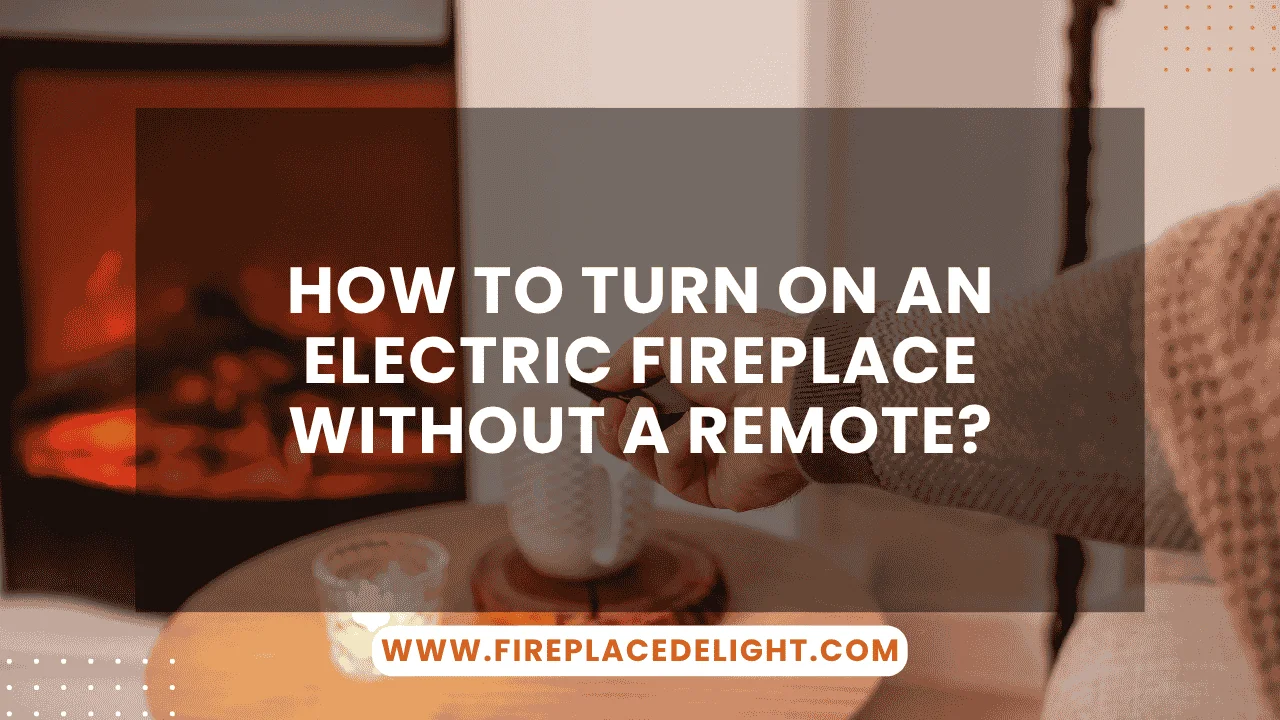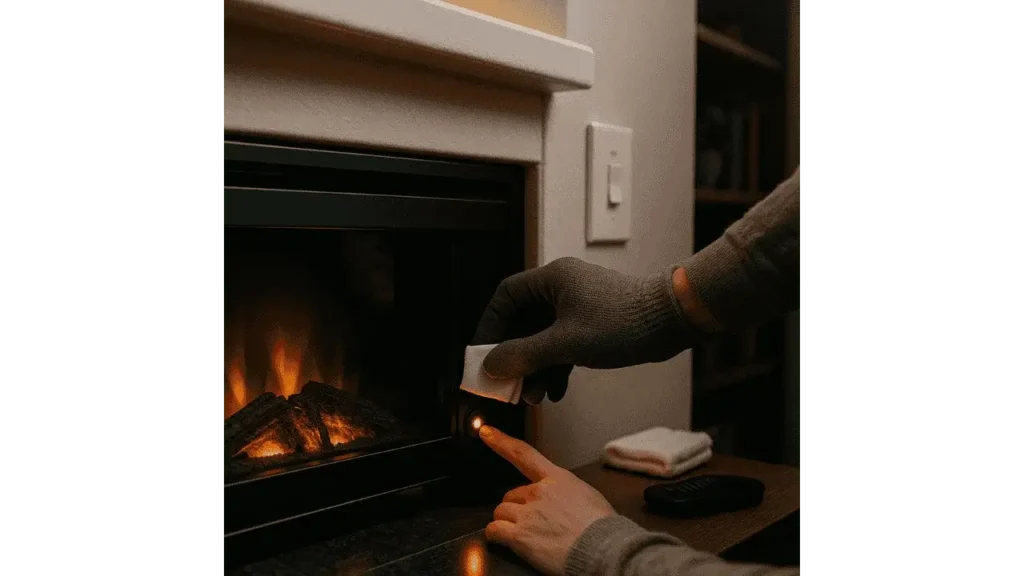Many electric fireplaces come with built-in controls that let you operate them manually. I’ve had to guide homeowners through this exact situation more times than I can count, whether the remote was lost, broken, or simply out of battery. If you know where to look and how the controls work, getting your fireplace running manually is a simple process that keeps you warm without the hassle.
Locate the Control Panel
Identify Its Position
Start by finding the control panel, which is usually tucked behind a small flap or access door. Depending on the model, you’ll find it near the front bottom edge, side panel, or occasionally behind the glass front. Some designs may hide the panel subtly, so check carefully with proper lighting to locate it without damaging any part of the unit.
Learn Button Labels and Functions
Once the panel is visible, look for clearly labeled buttons or toggle switches. Typical controls include Power, Flame, Heat, and Timer. Some models may also have a Light button for ember bed settings. Familiarizing yourself with each button’s function ensures you’re not just guessing, which can prevent accidental activation of unwanted settings.
Powering On the Fireplace
Use the Power Button or Switch
Press the Power button or flip the switch to turn the unit on. You might hear a low hum or see indicator lights activate; that’s a sign the fireplace is live and functioning. Ensure the unit is securely plugged in, and avoid forcing any switches if they appear stuck, as this could cause damage.
Adjust Flame and Heat Settings
After powering it on, use the nearby buttons to adjust flame intensity and heat levels. Most fireplaces offer adjustable settings for both heat and flame effects, allowing for low and high settings. Adjust to your comfort, and keep in mind that some models save the last used settings, while others reset after each use.
Accessing Advanced Functions
Activating Timer Functions
Locate the timer button on the control panel if your model includes it. Tap repeatedly to cycle through preset time durations, usually ranging from 30 minutes to 9 hours. The timer can help conserve energy and add convenience if you tend to fall asleep with the fireplace on.
Switch to Manual Mode (Select Models)
On some high-end models like Dimplex, there’s a selector switch hidden behind the upper grill. Flip the switch to “I” to bypass the remote and enable manual control. According to technician Alan Breyer,
“Many homeowners aren’t aware their unit even has a manual override. It’s a built-in failsafe that’s rarely used, but incredibly handy.”
Alternative Control Options
Smartphone Apps and Smart Home Integration
For fireplaces compatible with smart tech, you can control settings through smartphone apps or virtual assistants like Alexa and Google Home. Just make sure the unit is Wi-Fi-enabled and properly paired. Setup usually involves downloading the manufacturer’s app and following pairing instructions step-by-step.
Universal Remote or Smart Plug
If the original remote is lost, a universal fireplace remote may offer basic control. Alternatively, smart plugs let you turn the entire unit on and off via an app, though you’ll still need the panel for heat or flame adjustments. This can be an affordable workaround until you replace the original remote.
Learn More: Does an Electric Fireplace Need to Be Vented?
Troubleshooting Manual Controls
Power Panel Feels Unresponsive
Check if the fireplace is firmly plugged in. Test the outlet using another device or reset the breaker to eliminate power supply issues. Sometimes, a tripped GFCI outlet or a loose plug may be the simple cause behind an unresponsive control panel.
Buttons Are Unlit or Dead
Some models use touch-sensitive buttons that only light up when touched. Try tapping the area gently or adjusting a nearby brightness toggle. If it still doesn’t respond, unplug the unit for a few minutes and plug it back in to reset the internal electronics.
Malfunctioning Internal Switches
If none of the buttons respond, a faulty selector switch could be the issue. In that case, it’s best to consult a technician or reach out to the manufacturer. Avoid DIY electrical repairs unless you’re fully confident; it’s safer and more cost-effective to leave it to professionals.
Safety and Best Use Practices
Avoid Extension Cords
Always plug the fireplace directly into a wall outlet. Extension cords can overheat and pose a fire hazard, especially under sustained high-wattage loads. This is a key safety step many overlook, yet it significantly reduces the risk of electrical fires.
Regular Maintenance
Wipe down the control panel and inspect vents for dust buildup. Check the cord regularly for frays or damage. Simple upkeep prevents bigger issues later. As safety inspector Karla Denton puts it,
“The number one risk with electric fireplaces is poor maintenance; dusty vents and damaged cords are the silent troublemakers.”
Final Takeaways
Losing the remote doesn’t mean losing warmth. Most electric fireplaces are designed with easy manual controls that work just as well, if you know where to find them. Use the built-in panel, explore timer and selector switches, and take advantage of smart tech if available. As always, prioritize safety and regular maintenance, and your fireplace will keep working smoothly, remote or not.
- 27 Farmhouse Fireplace Ideas That Bring Warmth & Charm - August 18, 2025
- 25 Fireplace Lighting Ideas to Illuminate Your Hearth - August 7, 2025
- How to Replace an Electric Fireplace Switch? - August 5, 2025



